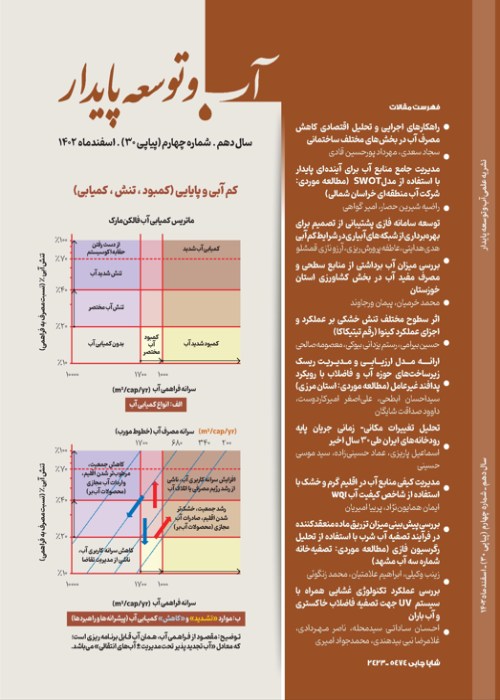An Overview of the Technologies Used for Water Purification in Aquaculture Systems with an Emphasis on the Model of Sustainable Development in Iran
One of the main limitations in the development of the aquaculture industry in Iran is access to fresh water with good quality. This requires the development of sustainable technologies for aquaculture wastewater treatment. The present study investigates breeding technologies in order to save water consumption in Iran's aquaculture systems, relying on the model of sustainable development. In this research, the innovations created in aquaculture wastewater treatment in recirculating aquaculture systems (RASs), aquaponics and integrated multi-trophic aquaculture (IMTA) systems have been discussed. A recirculating aquaculture system, which treats wastewater by removing toxic pollutants and recycling water, requires only 10% of the total volume of fresh water to produce of fish. Therefore, this system helps to save water. However, it has limitations, the most important of which is the accumulation of nitrates in the system, high economic cost, and difficult management, which is achieved by converting nutrients from aquaculture effluents into algal biomass. In addition to RASs, aquaponics is a food production system that combines conventional aquaculture methods and RASs. This method includes aquaculture and plant cultivation, which shows the integration of aquaculture-agriculture activities. Integrated multi-trophic aquaculture (IMTA) includes the use of symbiotic organisms in breeding systems that optimizes the balance of nutrients and purifies the wastewater resulting from aquaculture activities. This method shows the combination of different nutritional levels that organic and inorganic effluents are used by different organisms.
- حق عضویت دریافتی صرف حمایت از نشریات عضو و نگهداری، تکمیل و توسعه مگیران میشود.
- پرداخت حق اشتراک و دانلود مقالات اجازه بازنشر آن در سایر رسانههای چاپی و دیجیتال را به کاربر نمیدهد.


